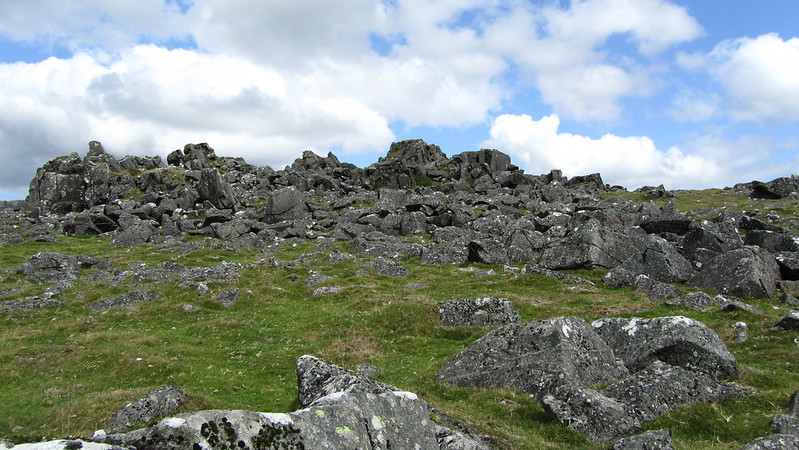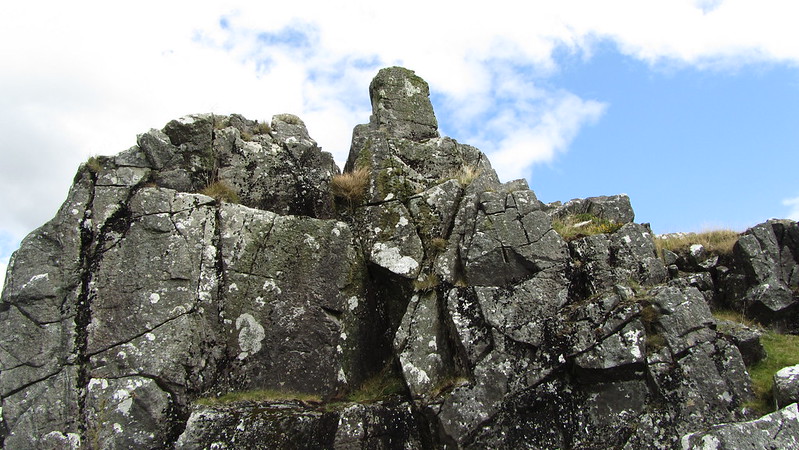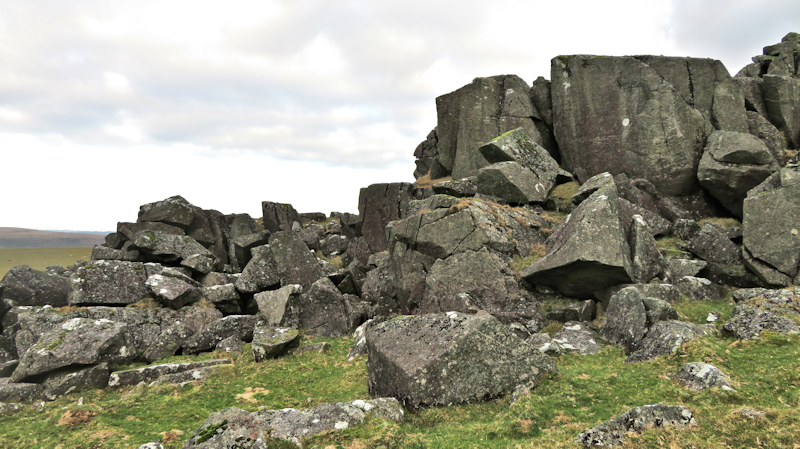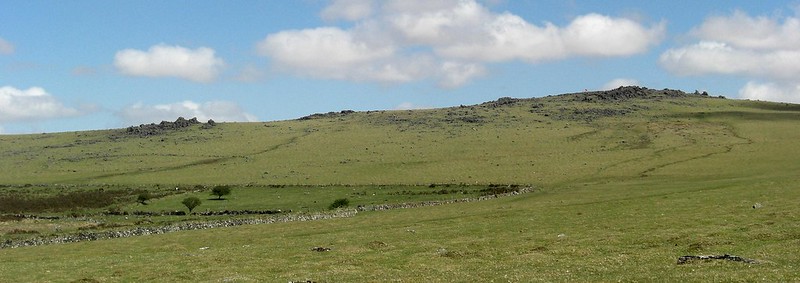TORS OF DARTMOOR
a database of both lesser- & well-known rocks and outcrops
Little White TorLittle Whit Tor, Little Whittor
 When viewing from the south-west three broken piles are seen to run westward across the ridge from the mass of White Tor (see photo 4), that in the past has also been known as Peterstone Rock and Peter Tor. The largest and most distinctive of these non-granite piles, the western most at SX 5382 7871 is known as Little White, Whit or Whittor, and in accordance with Eric Hemery's observations despite its name, the tor's ruin is indeed great. The author writing in relation to the parent tor remarks "...its small, weathered companion pile, Little Whit Tor (1,375 feet), straddling the declining crest some three hundred yards above the Broadmoor enclosures. 'Little' in name but great in ruin... The down, its crest covered by 'molehills', is comparatively featureless; a few small outcrops of border-rock lie below the clitter of Little Whit Tor and two small cairns are separated by a track..."  Situated some 200 metres north-east of the huge circular Bronze Age pound on Cudlipptown Down, the tor forms a scattered pile of jagged black faced rocks that culminate in a west facing three-metre-high cliff. From here the views to the south of Roos, Cocks and Sharp Tors are exceptional, whereas south westward the craggy outline of Smearn Ridge is seen above Twyste Lane and beyond this to the north the pimple of the church atop Brent Tor is most prominent in the distance.  It is William Crossing who explains that the range of Cocks and White Tors is outside of the granite pluton of Dartmoor and consists of what he terms "trap rock". This part of the moor is widely known as the Dartmoor 'aureole' (Durrance and Laming 1982) in so much that its rock piles surround the central core of the moorland granite. Worth (1953) advises that fragments of hornblendic rock can be found here, this being a non-aluminous, anhydrous silicate of crystallized rock with striated and frequently rough faces. The hornblende of the moorland border is mostly black and grey and that accounts for the distinctive appearance of both Little White Tor and the nearby lowly rocks of Set Tor.  Between these two sites but much nearer to the latter stands the small, pointed stone of Stephen's Grave at SX 5362 7813. Further information on the legend of this Grave is provided by the Dartmoor National Park Authority on their website: "Stephen's Grave is marked by a stone and lies at the limits of the Peter Tavy Parish. George Stephens was a youth of Peter Tavy who took his own life because of the unfaithfulness of the girl to whom he was betrothed. He was buried in the usual barbarous manner for a suicide. But the legend has it that, at the moment he was being laid to rest, some linen that was hanging out to bleach at Higher Godsworthy was caught up in the air in a freak gust of wind and was never seen again.
| ||||||||||||||||||||||||||||